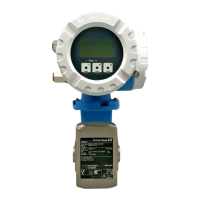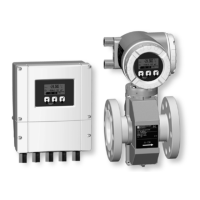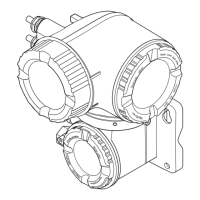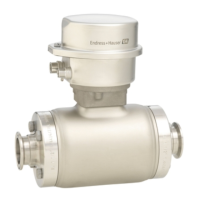3 Installation Promag 53 PROFIBUS-DP/-PA
18 Endress+Hauser
3.2.7 Adapters
Suitable adapters to (E) DIN EN 545 (double-flange reducers) can be used to install the
sensor in larger-diameter pipes. The resultant increase in the rate of flow improves
measuring accuracy with very slow-moving fluids.
The nomogram shown here can be used to calculate the pressure loss caused by cross-
section reduction:
Note:
The nomogram applies to fluids of viscosity similar to water.
1. Calculate the ratio of the diameters d/D.
2. From the nomogram read off the pressure loss as a function of flow velocity
(downstream from the reduction) and the d/D ratio.
Fig. 14: Pressure loss due to adapters
3.2.8 Nominal diameter and flow rate
The diameter of the pipe and the flow rate determine the nominal diameter of the sensor.
The optimum velocity of flow is 2...3 m/s. The velocity of flow (v), moreover, has to be
matched to the physical properties of the fluid:
• v < 2 m/s: for abrasive fluids such as potter's clay, lime milk, ore slurry, etc.
• v > 2 m/s: for fluids producing build-up such as wastewater sludge, etc.
Note:
Flow velocity can be increased, if necessary, by reducing the nominal diameter of the
sensor (see Page 18).
F06-5xxxxxxx-05-05-xx-xx-000
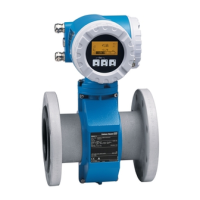
